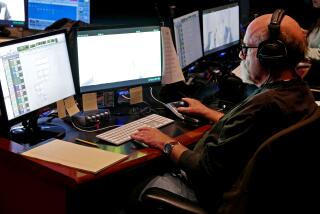Richard Leacock dies at 89; documentary filmmaker pioneered cinema verite technique
Richard Leacock, a documentary filmmaker and pioneer of the unobtrusive cinema verite camera technique, has died. He was 89.
Leacock died Wednesday in Paris, said his daughter Victoria Leacock Hoffman. He had been in declining health and had taken several recent falls, she said in an email.
Leacock’s technical acumen supplied the likes of Jean-Luc Godard and Francois Truffaut with the tools of their trade. His insightful direction laid the groundwork for generations of filmmakers seeking to use their cameras to capture real life as it happened, colleagues said.
“Richard Leacock was one of the true pioneers of documentary filmmaking,” director Martin Scorsese said in a statement. “He was instrumental in the development and use of lightweight, portable equipment, which opened the way for genuinely independent filmmaking. And he had a remarkably sensitive, quick camera eye. He paved the way for all of us.”
Documentary filmmaker Albert Maysles first worked with Leacock on “Primary,” the seminal documentary directed by Robert Drew that followed John F. Kennedy’s presidential campaign in Wisconsin.
“He had a poetic eye behind the camera, which gave him access to anybody because they sensed they could trust him,” Maysles said.
In the post-World War II period, filmmakers were increasingly preoccupied with escaping the confines of the film set and capturing real life as it was happening. But that ambition, known as cinema verite (French for “truth cinema”), faced a daunting technical challenge: Taking the camera out of the studio made it extremely difficult to capture high-quality sound.
Filmmakers needed to find a way to soak up speech and video independently without letting the pair slip out of sync, and it was Leacock who hit upon the idea of using a system of American-made Bulova watches to keep the two in accordance.
Leacock was born July 18, 1921, and raised in England and the Canary Islands, where his father had a banana plantation. He studied physics at Harvard University and served as a combat photographer for the U.S. Army during World War II.
Leacock wrote, directed and edited “Toby and the Tall Corn,” a 1954 documentary about a traveling tent theater in Missouri. It aired on television as part of the cultural program “Omnibus.”
In 1960, Leacock formed a partnership with documentarian D.A. Pennebaker. Besides serving as cinematographer on “Primary,” Leacock had a hand in the documentaries “A Stravinsky Portrait,” about composer and conductor Igor Stravinsky, and “Monterey Pop,” about the 1967 rock music festival. He also was cinematographer on Drew’s 1963 “The Chair,” which documented Chicago lawyers trying to get a man off death row.
Leacock moved to Paris in 1989 after retiring from the Massachusetts Institute of Technology, where he taught for 20 years in the film/video section.
A memoir, “Richard Leacock: The Feeling of Being There,” will be released this summer as a book and a digital video book.
Survivors include his wife, Valerie Lalond, five children and nine grandchildren.
More to Read
Start your day right
Sign up for Essential California for the L.A. Times biggest news, features and recommendations in your inbox six days a week.
You may occasionally receive promotional content from the Los Angeles Times.






